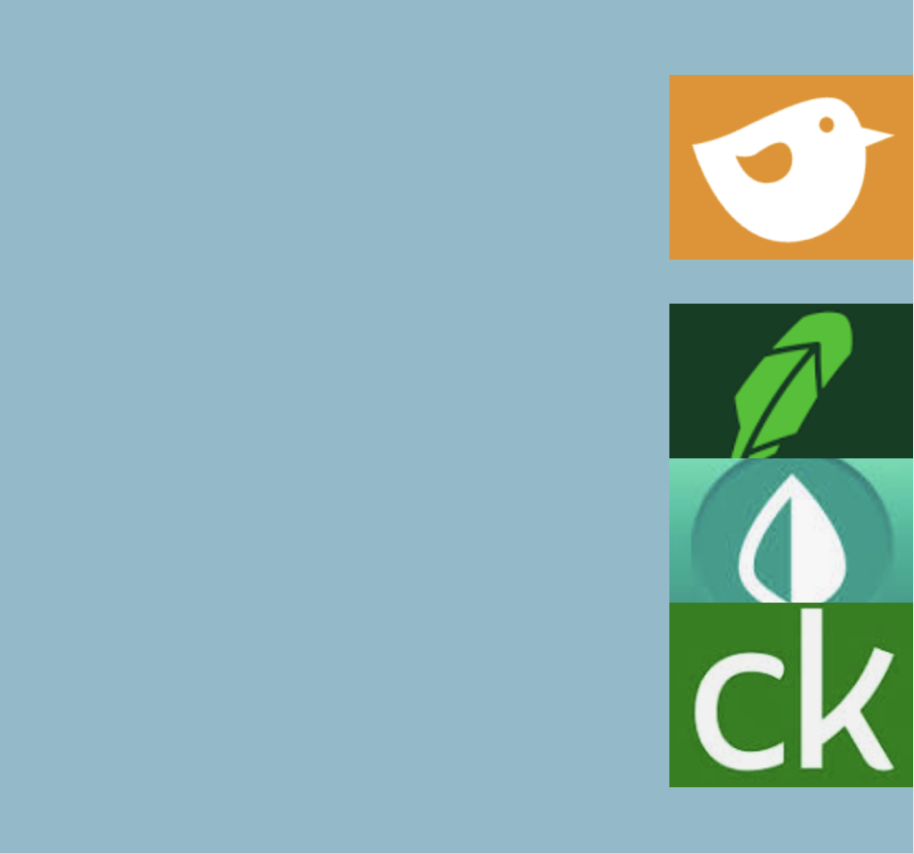
Nexamp Solar:
Reimagining Decarbonization
Challenge
*Certain details of the final product have been omitted for proprietary reasons.
How can we create a comprehensive decarbonization experience - one that educates, encourages, and empowers customers to address the full scope of their carbon footprints?
Nexamp, Inc. is a leading national clean energy company that develops, manages, and maintains solar energy solutions and assets. The company is in the process of improving and expanding their existing customer portal, which is currently limited to housing customer profiles and payment options. Their goal is to create an integrated experience that combines informational and actionable resources, allowing subscribers to clearly and accurately grasp the full scope of their carbon emissions and how decarbonization works, while offering a variety of offsetting opportunities.
But what types of information are most important to Nexamp’s subscribers? What features would actually motivate users to expand the scope of their decarbonization practices? And how can we establish an adequate level of customer trust in the services offered?
These questions motivated our research, the goal of which was to generate design insights for how to best inform and motivate customers to expand the scope of their carbon offsetting.
Process
Methodology
We began by developing a research plan aimed to better understand Nexamp’s customers, the current state of their platform, and the best strategies for creating an all-inclusive experience.
We arrived at a three-stage, mixed methods approach.
We began with a survey to better understand Nexamp’s customer base, their views of the current portal, and their interest in expanded optionality.
We conducted competitive and comparative analyses to understand how similar and analogous models create an integrative customer experience.
We recruited and conducted interviews of 11 participants to understand their preferences, needs, and pain points regarding decarbonization.
An initial survey was conducted with our customer base to learn more about their demographics, interests, and use of related products. The survey consisted of 13 questions covering 3 topic areas:
Demographics (age, profession, income)
Satisfaction level with the current customer portal
Interest level in information and options related to prospective features
On the whole, 92% of our 131 participants expressed strong support for a more comprehensive customer portal that offered a guide to Nexamp’s subscription process, a carbon footprint calculator, expanded carbon-offsetting payment plans, and further, non-solar decarbonization resources. However, the relative weight of these options differed across broad demographic lines.
Survey
Age 25-45
Age 45+
For subscribers between 25-45 years of age, the features of central concern were an assessable way to both understand one’s carbon impact and address it through offsetting payment options. By contrast, subscribers 45 and over, who currently makes up the bulk of Nexamp’s customer base, expressed greater interested in how their subscriptions work, down to the actual solar farms their payments are supporting, as well as how they might address their carbon footprint through alternative methods aimed at gas usage, food consumption, and plastic waste.
Our survey provided a foundational overview of Nexamp’s customer base and its range of priorities. It also shed light on ways that the company might expand that base by addressing the needs of younger working professionals.

We set out to review the marketplace for services that offer the similar functionalities to the proposed portal. The main direct competitor is wren.com, a California-based company that provides similar decarbonization services. Three aspects of Wren’s customer portal stood out:
Transparency: Their mission and products are clearly stated and easy to locate.
Credibility: Third-party vetting is displayed across the platform, including endorsements, accolades, certification (B corp), and user reviews.
Simplicity: A introductory user survey quickly and clearly answers the most pressing questions regarding one’s carbon footprints, its main sources, and potential offsetting solutions.
Competitive and Comparative Analysis
In order to better understand the general needs of an all-inclusive portal, we also conducted a review of leading platforms offering analogous approaches across parallel domains, e.g., banking, credit, and investment. Our analysis focused on three companies: Intuit Mint, Credit Karma, and Robinhood. All three leveraged the following techniques effectively:
Visualization: the compelling use of graphs, tables, charts, and icons to situate and encourage customers in their profile development
Discovery Options: providing a multiplicity of informational resources and related courses of action, while also offering users clear ways to understand the relationship between the two, e.g. between interest rates and mortgage payments.
Gamification: encouraging customers to understand their performance within a broader context though social comparison and incentivized interaction.
To acquire deeper insights into our users’ needs, priorities, and pain points, we recruited and interviewed 11 participants in total:
4 within the younger professional demographic (age: 25-45)
7 representative of Nexamp’s larger customer base (age: 45+).
Of the 11 participants, 6 were current Nexamp subscribers and 5 were UserTesting participants whom we queried about their interest in a decarbonization platform
Affinity mapping revealing 4 central themes across participants.
User Interviews
Trust: with a product as intangible as carbon offsets, public trust relies heavily on the company’s credibility as a green energy provider, which in turn makes third-party endorsements and certifications all the more necessary.
Meaningful Visuals and Metrics: demystifying an issue like decarbonization requires the use of clear and relatable metrics that contextualize one’s carbon consumption through local, national, and even global comparisons.
Ease of Use and Access: the subscription process must be clear and straightforward, allowing customers easily and accurately to determine their current carbon footprints and to identify appropriate payment options.
Choice: especially as conditions have changed through the pandemic, e.g.,the decrease in workplace transportation, subscribers stressed the need for personalized decarbonization plans to match their unique circumstances.
Interestingly, our younger participants spoke largely to 2 and 3, while our older participants emphasized the importance of 1 and 4. These trends overlapped with the main findings of our survey, suggesting the need for two personas to speak to the spectrum of concerns (see Insights below).
Insights
Our mixed methods approach produced an array of insights, three of which figured decisively in the subsequent design process.
Balancing Customer Needs
The data indicated that our portal must balance different user priorities: the convenience of a one-stop shop for decarbonization with the opportunity to alter one’s subscription to meet changing conditions. To represent these needs, we created two personas: Dani, ‘the young, working professional’, and Robert, ‘the established, conscious consumer’.
Occupying both perspectives allowed our design team to make decisions that accommodated the competing demands of simplicity and specification. The goal was to create an straightforward baseline experience with various avenues for refining one’s decarbonization practices.
Cultivating Trust
The results of our competitive analysis and user interviews reinforced the importance of establishing credibility with existing and prospective subscribers. One method already noted is through receiving external endorsements from watchdog organizations. But participants also emphasized the importance of concretizing the decarbonization process - putting a name and face on the actual source of subscribers’ carbon offsetting investments.
Our design team explored ways to help customers visualize their money at work through pictorial and narrative storytelling that aimed to humanize the decarbonization process at a level that non-experts could understand and appreciate.
Comparison as a Primary Metric
Somewhat surprisingly, our competitive analysis and user interviews highlighted the significance of comparison as a motivating factor. It was crucial not only for understanding one’s initial emission levels but also for fostering long-term engagement. Participants reported that continuing one’s subscription depended on knowing how much one’s carbon footprint had changed over time relative to one’s peers or community. Some interviewees even acknowledged the role that competition or social media sharing would have in their decision process.
Comparison with others also provides a matrix through which customers can reevaluate their goals. Understanding how one’s emissions compare at local, national, and global levels, and learning how regional differences shape environmental impact, can help subscribers better target the specific sources of their carbon footprints.
Results
Our research efforts led to the implementation of several new features in Nexamp’s customer experience portal, including a carbon footprint calculator, enhanced visualization metrics, and expanded decarbonization resources.
Our insights also paved the way for further research into the role of social media sharing as a stimulus for behavioral changes.
*Thanks for reading! Certain details of the final product have been omitted for proprietary reasons.





